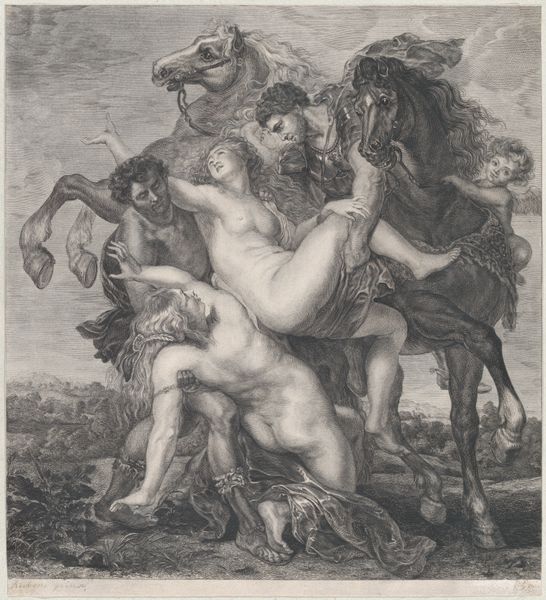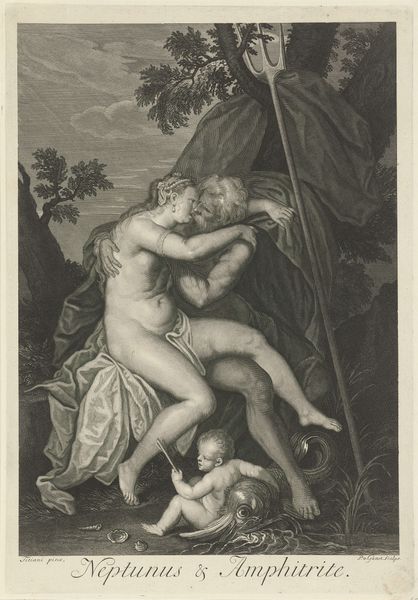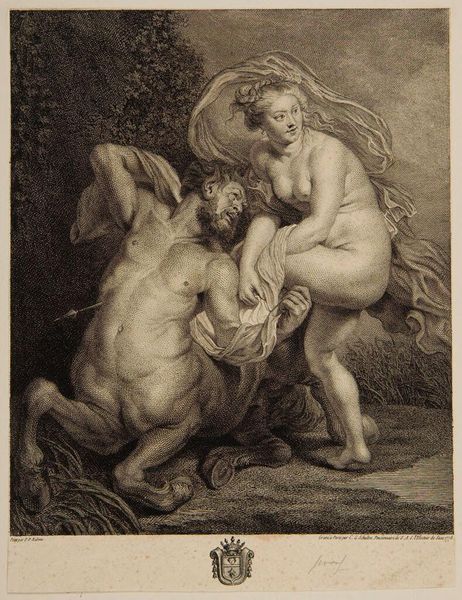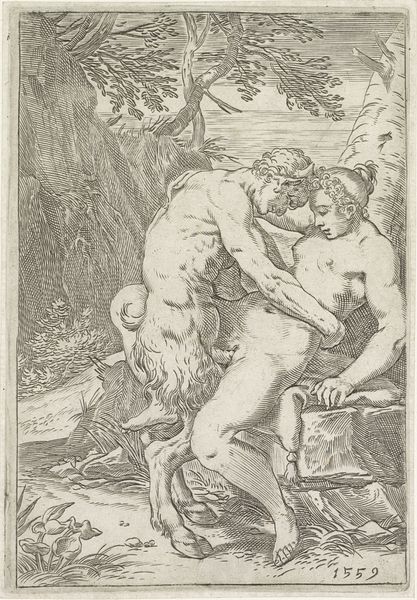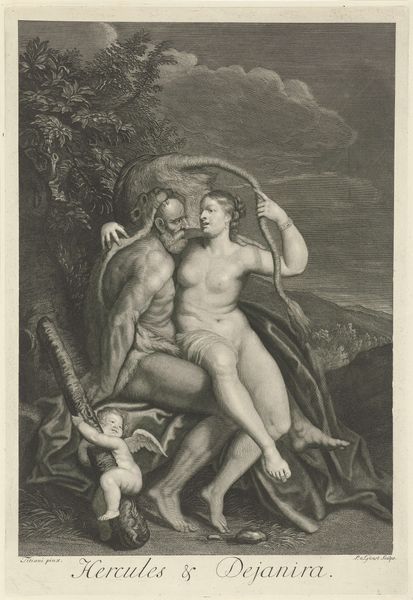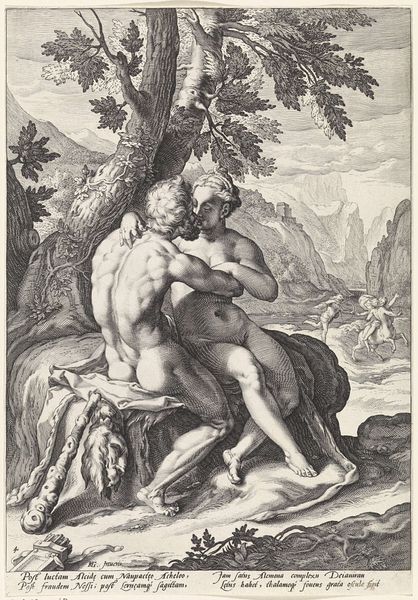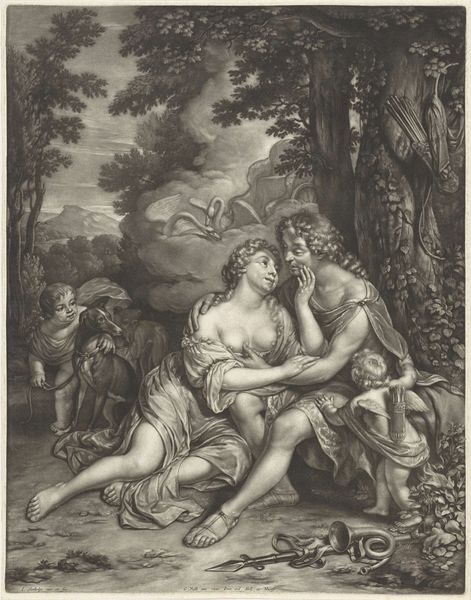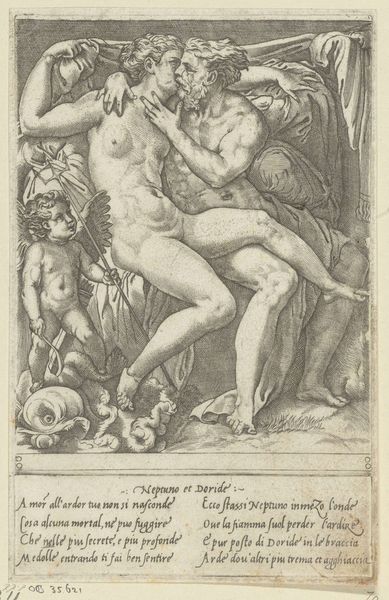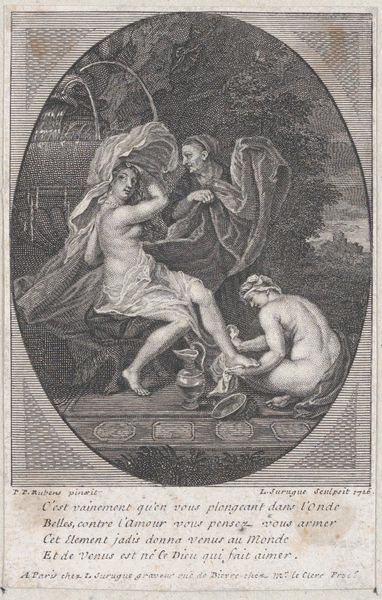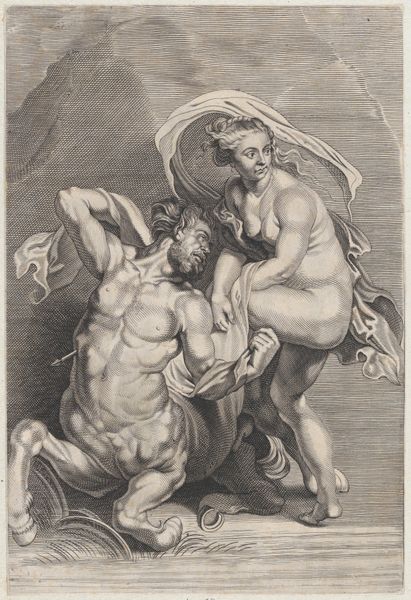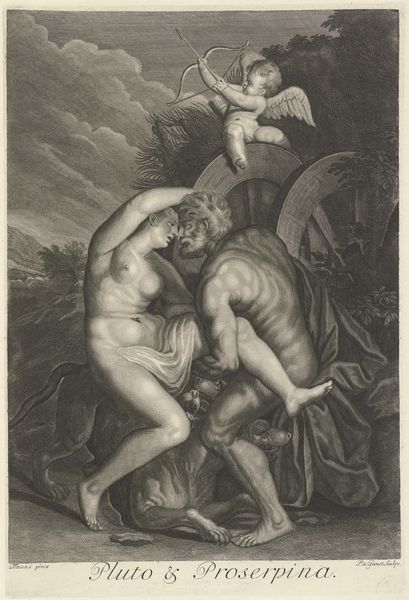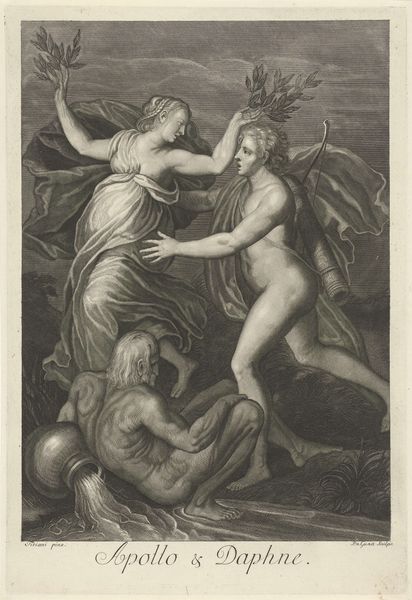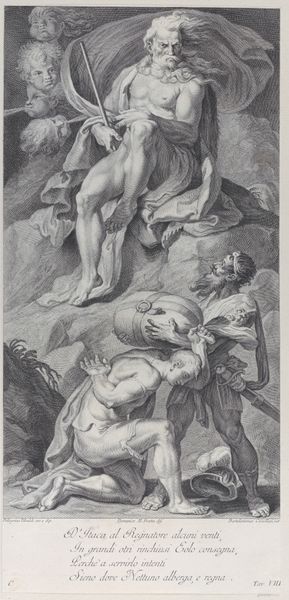
Deianeira receiving the poisoned tunic from Nessus, and the wounded centaur falling to the ground at left 1778
0:00
0:00
drawing, print, engraving
#
drawing
# print
#
classical-realism
#
figuration
#
history-painting
#
academic-art
#
nude
#
engraving
Dimensions: Sheet: 9 1/8 × 6 15/16 in. (23.1 × 17.7 cm)
Copyright: Public Domain
Editor: This engraving from 1778, titled "Deianeira receiving the poisoned tunic from Nessus…" by Christian Gottfried Schultze, depicts quite a dramatic scene. The figures are so classically rendered, almost statuesque, but there's a real sense of tension in the composition. What do you see in this piece, beyond the obvious mythological narrative? Curator: The poisoned tunic itself becomes a powerful symbol. It represents deception and betrayal, cloaked in what appears to be a gift. Consider how frequently clothing functions in mythology and folklore; it can denote status, identity, even protection – but here, tragically, it signifies death. Do you see any irony in Deianeira’s gesture? Editor: Definitely. She's reaching for it so eagerly. Is that naivete or is Schultze perhaps making a broader comment on the roles women played in historical narratives? Curator: Precisely. Note how her body language contrasts with Nessus, whose posture suggests duplicity. The image plays with the viewers’ own awareness. Even without knowing the myth, we sense a power imbalance and the tragic implications ripple outwards. What sort of emotional impression are you left with? Editor: It's a somber feeling. This single image encapsulates betrayal, suffering, and ultimately, the downfall of heroes, despite its seemingly idyllic rendering. Thanks so much for pointing that out! Curator: It has been insightful seeing the engraving from your perspective too. Paying attention to the encoding of emotions using symbol is what will stay with me.
Comments
No comments
Be the first to comment and join the conversation on the ultimate creative platform.

